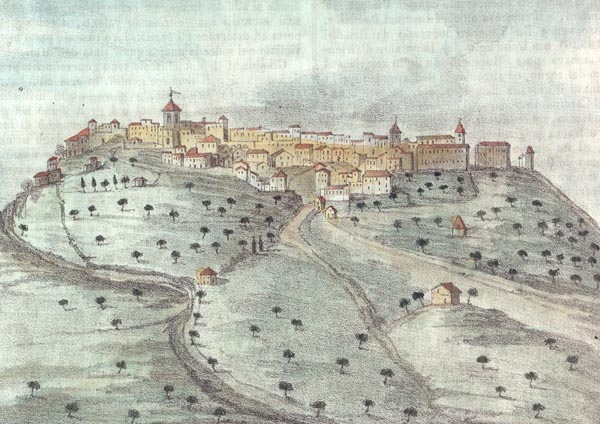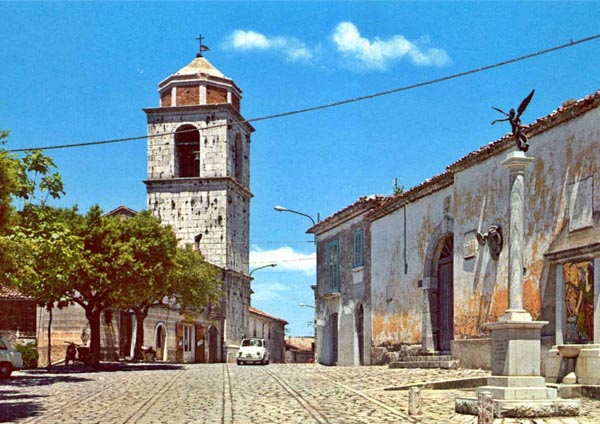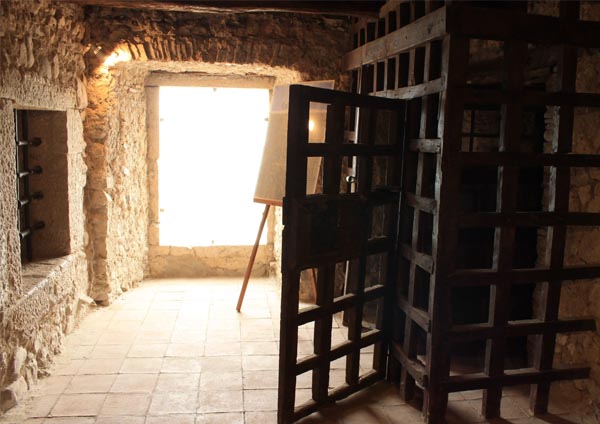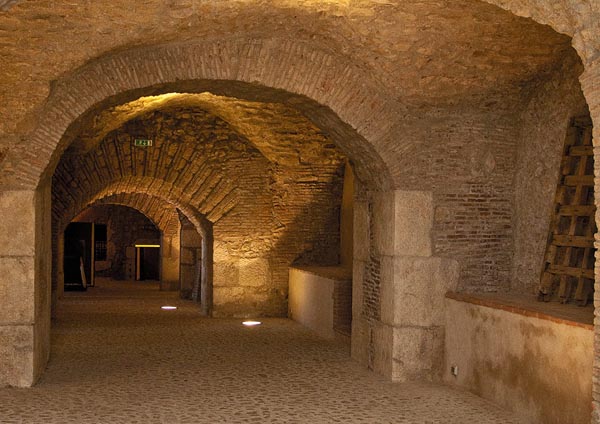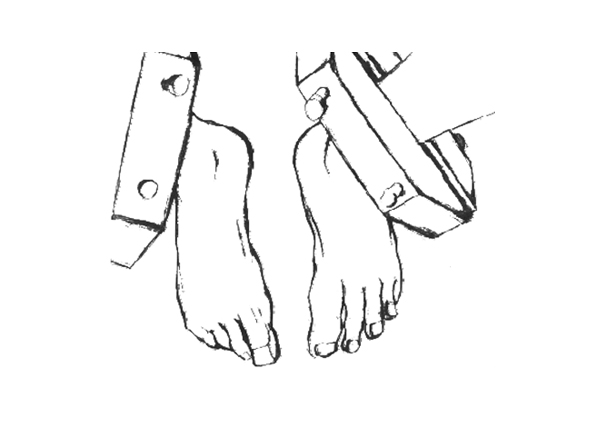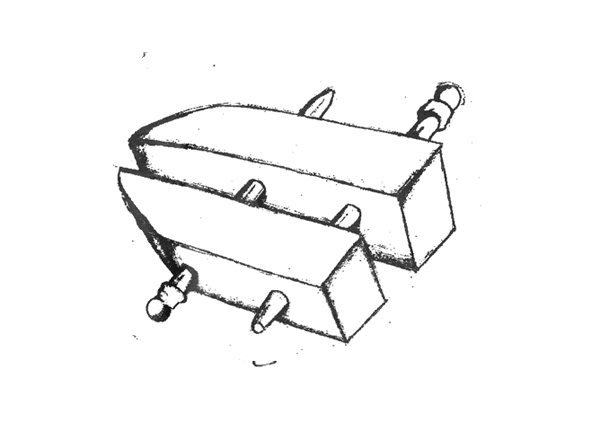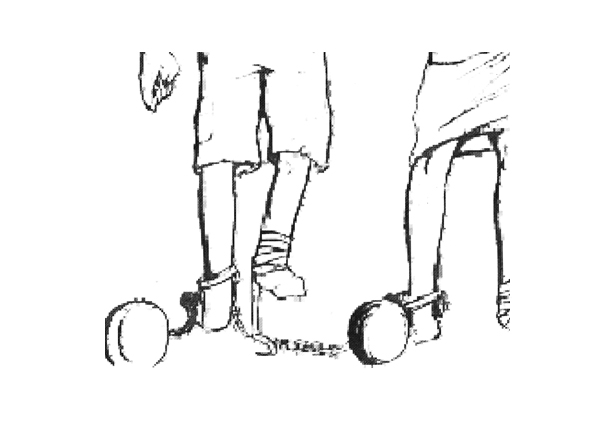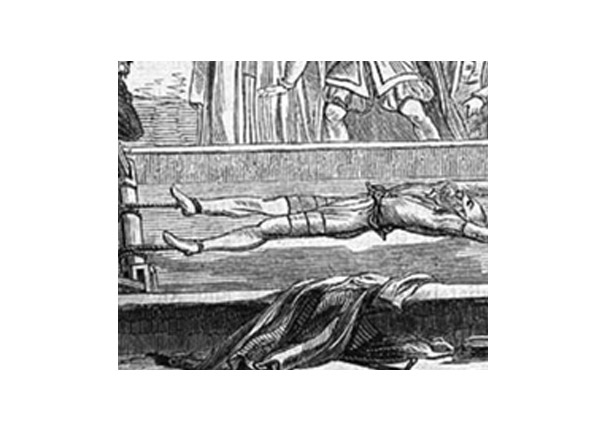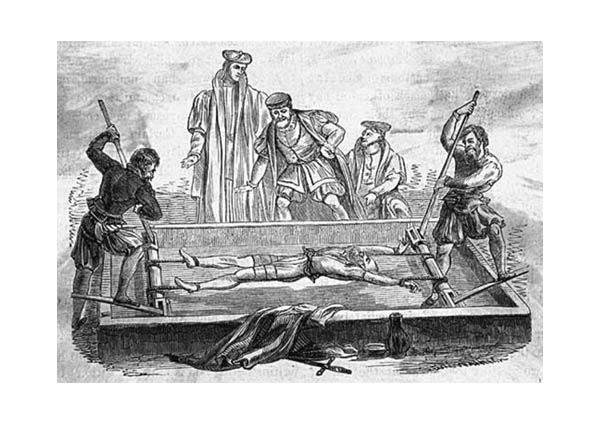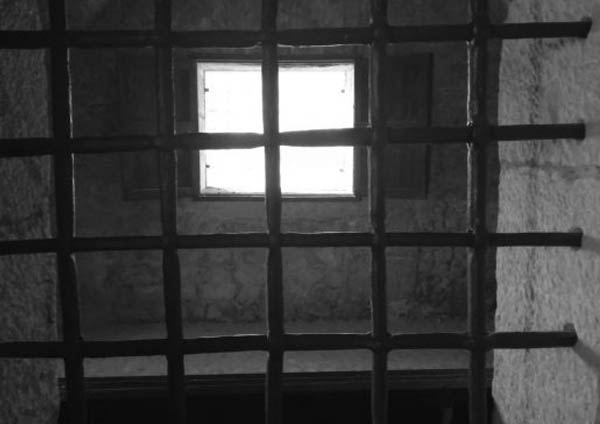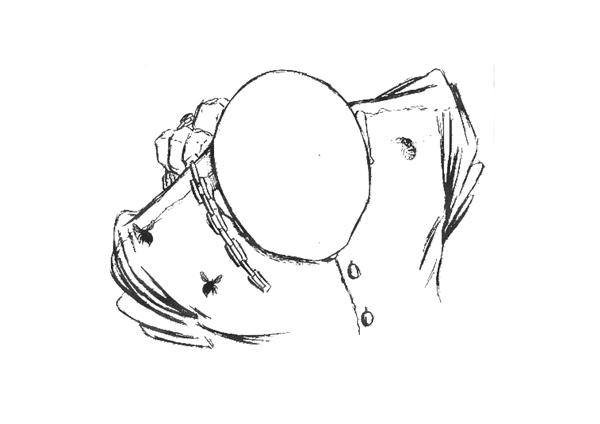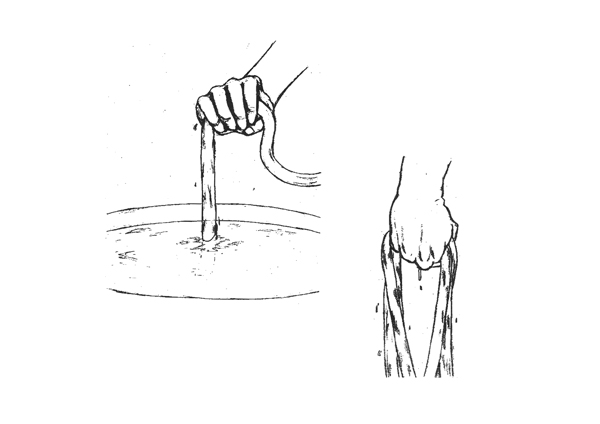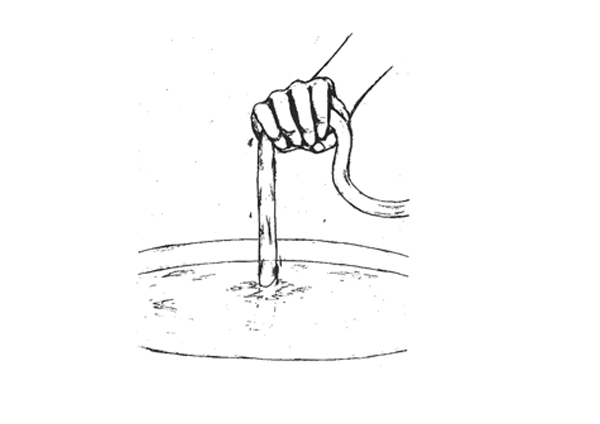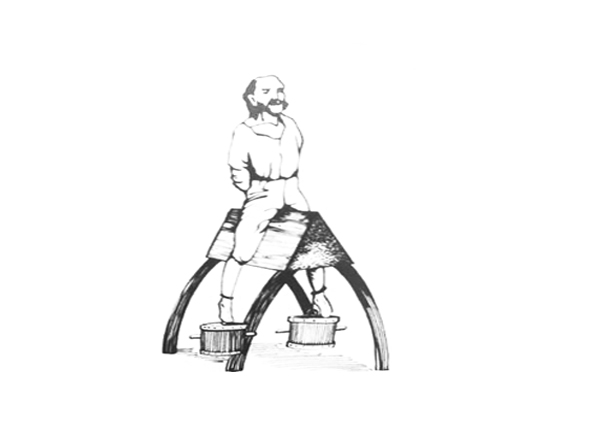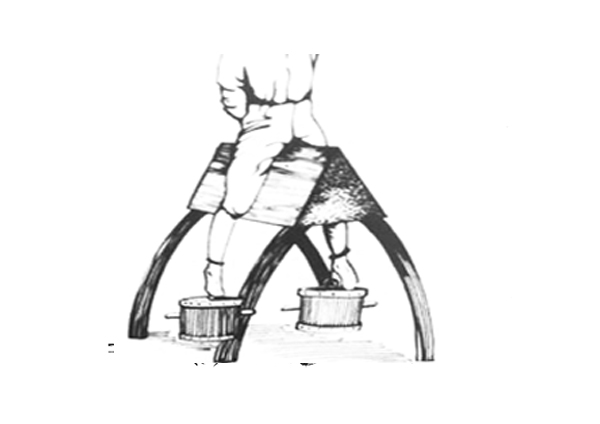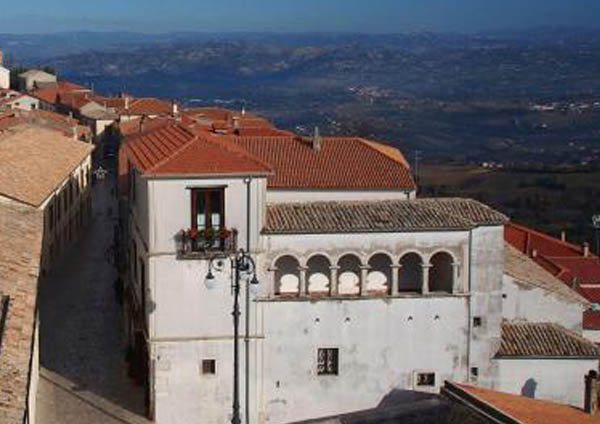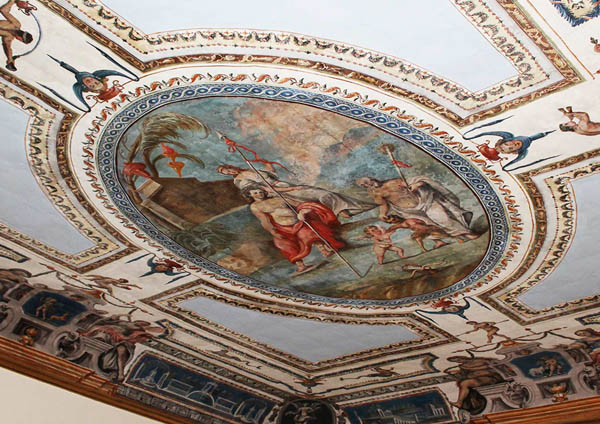The Spielberg of Irpinia
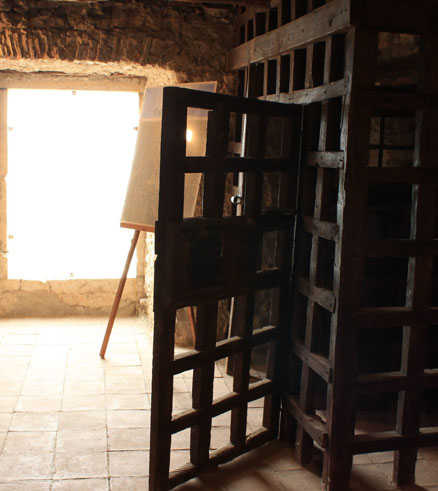
HISTORY OF THE PRISON
Castle dungeons were turned into a prison of the Royal Provincial Audience of Principato Ulteriore, then into a political prison, since the time of the failed Neapolitan Revolution of 1799.
Audio-Guide
But it became notorious because of the years of imprisonment, by the Bourbons, of the Liberals who took part in uprisings of 1848. As a matter of fact, it was declared First Class Penal Colony, or ‘maximum security prison for political prisoners only’. Among the most popular detainees of this period there were Poerio, Castromediano, Nisco, Pironti, Pica, Braico, Stagliano’ and many others from central south Italy.
Instruments of Torture
TORTURE IN PRISON
The Royal Audience of Montefusco was considered one of the most strict in the Kingdom of Naples. The bad reputation of its ancient prison, carved ‘in the steep side of the mountain’, was justified by dreadful hygienic conditions that forced even the President of the Province to leave the building during the summer months.
Audio-Guide
In wintertime, however, damp and cold conditions of the rock afflicted the inmates. But these prisons were also infamous for their painful punishments, particularly described by Eliseo Danza, a 17th-century jurist from Montefusco, in his ‘De pugna doctorum’. Actually, a distinction have to be made between two types of “tormentum”: the one, “ad eruendam veritatem”, used in the pre-trial phase to force the accused person to confess; the second one, “ad poenam”, punishment for the most ferocious convicts and for those who broke prison rules.
STANGS
was a method of torture practiced only on certain categories of convicts.
Audio-Guide
The stangs were used mainly with women, old men and people of frail constitution: it was in fact a less painful torture than the rope. It consisted of squeezing the foot, at the level of the malleolus, between two pieces of wood that were progressively brought closer and closer together by means of a worm gear, until it caused excruciating pain in the bones and difficulty in walking.
CHAIN
Describing this torture, practised in the Montefusco prison, was Sigismondo Castromediano, who was imprisoned here until 1859 when, by Royal Decree, the sentence of life imprisonment was commuted to perpetual exile.
Audio-Guide
“The chain! is a strand of sixteen long links, one tied to the other; it stretches over three and a half metres and weighs over fifteen kilograms. Its hoarse screeching and perpetual squeaking deafens and sickens…. If it is ever possible to get rid of it, even then, for a long time, one feels its weight: a painful impression, as if it continues to grip one’s foot”.
RETALIATION
The punishment of amputation was provided for by a constitution of Frederick II and a prammatica of Ferdinand I of Aragon for blasphemers, whose tongues were amputated.
Audio-Guide
Eliseo Danza notes, however, that only in rare cases did the royal court of Montefusco resort to this solution. Milder sanctions such as the confiscation of one third of property, imprisonment for four years or public flogging were preferred.
GOAT TONGUE
This is probably the most imaginative torture applied in the Montefusco prison.
Audio-Guide
The accused was laid out on a table, tied so that he could not escape, and then the soles of his feet were washed with very salty water, at which point a fasting goat was approached, which, greedy for salt, began to greedily lick the feet of the accused with its tongue until its bones were exposed.
PUNTALE
The torture most frequently used by Montefusco’s jailers was undoubtedly “il Puntale”.
Audio-Guide
During the Risorgimento, when the Montefusco prison became a first-class penal bath, the punishment most frequently used by warders to punish behaviour contrary to the internal regulations was undoubtedly “puntale”. Prisoners were as a rule free to move within their own wards: when they were forced to the puntale, however, a chain bound them to a ring embedded in the ground, largely limiting their movements in a very confined space.
HANGING
Capital punishment par excellence was imposed for many serious crimes.
Audio-Guide
It was punished, in particular, for the crimes of brigandage, murder, theft, rape, treason, lese majesty divine or human, and counterfeiting of money. The executions were public and took place at the Passo Serra crossroads, while the corpses were buried in the nearby church of “Santa Maria di mezzo mondo”.
MOSCONE
One of the most unbearable tortures applied in the Montefusco prison was the “Moscone”.
Audio-Guide
This form of torture, deprecated by Eliseo Danza for its cruelty, consisted in making the accused wear a shirt and inserting flies or wasps in it. The shirt had to be hermetically sealed at the neck and waist so that the insects, unable to get out, would begin to torment the alleged offender.
STRECH OF ROLE
This torture is quite common throughout Europe and very frequent in the Montefusco prison due to the simplicity of its execution.
Audio-Guide
The defendant’s wrists were tied to the end of a long rope that held him suspended in the air. The rope passed through an iron ring placed under the ceiling; at the other end it was pulled by the torturers, either by hand or by means of a wheel. This had the effect of a pulley: the victim was lifted and then suddenly dropped, so that all the weight was put on the joints of the shoulders and caused them to dislocate.
POLLETRO
This term was used in the kingdom of Naples to indicate the ancient Roman torture of the eculeo.
Audio-Guide
“Polletro” is an archaic term for “foal” and in fact the torture instrument used was a sort of wooden stand that roughly resembled the shape of an equine horse on the back of which was a very sharp spike. The tortured person was forced to sit on it and then weights were applied to his arms and legs to achieve the same effect as an impalement. The limbs would remain in traction for hours and this could lead to perennial deformities.
Two stories by Palmerino Savoia
CHAINS OF CONDEMNED TO THE SPANISH TRIREMES
The two episodes illustrated below by Palmerino Savoia are related by Eliseo Danza, a jurist and writer from Montefusco who lived between the sixteenth and seventeenth centuries, in his major work entitled “De Pugna Doctorum”, printed in Montefusco in 1644 by a traveling printer.
